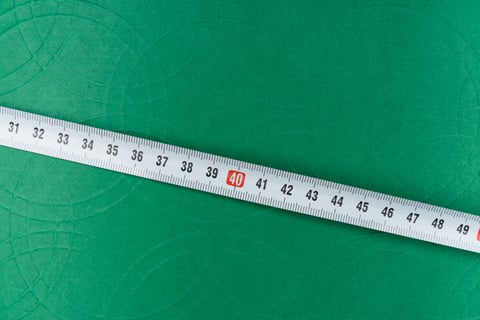Improve CRM Adoption by Rethinking Your Salesforce Opportunity Stages
The right opportunity stages can make or break your ability to forecast, coach reps, and drive adoption/accuracy of the CRM.
How often do you look at your funnel in Salesforce and question the quality, forecast, and health of an opportunity?
We recently spent time analyzing opportunity stages across our customer base and learned a few things:
-
common traits
-
common problems
-
general approaches
The companies we evaluated are primarily mid-market in size (20-100 reps), B2B SaaS, and all have an SDR team.
Common traits of successful Salesforce opportunity stages
- 6 stages on average
- SDRs own stage 1, handoff to AEs at stage 2, and qualified/accepted opps by the AE start at stage 3
- Pipeline (what sales management and executives look at for the sales forecast) is usually only measured from a specific stage of the funnel, either at qualified or one opportunity stage down
Common problems with Salesforce opportunity stages
We analyzed trends in conversion rates, stage usage/stage skipping, pipeline stagnation, and loss rates by stage using FunnelCake.
The results were interesting:
- Generic Salesforce opportunity stage names like “Solution Validation” or “Evaluation” end up as catch-all buckets with high stagnation rates. When stages do not have clear entry and exit criteria, opportunities often end up sitting stagnant for long stretches and result in either the opp getting abandoned or immediately moved to closed won.
- Reps will frequently skip stages they don’t find to be useful, even if there is a clear purpose designed for sales management to use (i.e. forecasting)
- Bottom of the funnel stages are typically used for managing granular portions of the process: contract sent, contract negotiation, verbal approval/waiting signature. These stages are useful for forecast management, but for analysis, they aren’t very helpful. Typically these stages end up with < 6-8 hours in each stage for Closed Won deals and 100% conversion rates. Since many organizations want to keep the number of stages low, this leads to a trade-off between a more granular process in managing discovery/development of the opportunity and forecasting revenue.
The most effective Salesforce opportunity stages
Using FunnelCake we looked at trends across Salesforce opportunity stages with high conversion rates, high stage usage, high velocity, and high win rates.
- Process-specific naming leads to high-usage. Examples of this could be
- “Meeting scheduled” and “Meeting Completed” for the SDR process, or
- “Contract Requested” “Contract Negotiation” for bottom of funnel.
- Organizations use “Record Types” and “Sales Process” in Salesforce to use different stages for different funnels – for example, if the organization has a sales-assisted transactional sale, an inside sales/mid-market process, and an Enterprise/ABM process.
- Many organizations will also use different stages to manage renewals/upsell, usually only have 3 stages.
- This makes rep adoption very strong but can cause challenges if you’re trying to create normalized analysis for reporting.
Example 1 – sales assisted transactions
This is a mid-market sized organization with a sales-assisted transaction and a sales cycle < 30 days.
Opportunity Owner
SDR
SDR
SDR > AE
AE
AE
AE
AE
AE
AE
Salesforce Stage Type
Assigned
Working
Handoff
Pipeline
Pipeline
Pipeline
Pipeline
Pipeline
Won
Salesforce Stage Name
Discovery Scheduled
Discovery Completed
Demo Scheduled
Demo Completed
Proposal Creation
Proposal Submitted
Verbal
Contract Sent
Won
This is effective for organizations with a straightforward qualification process, single buyer deal, and a fast sales cycle length. For more complex sales, there is not enough granularity between demo, proposal, and verbal where buying teams need to be rallied.
Example 2 – selling to mid-market accounts
This organization sells into mid-market accounts with a sales cycle ~30-90 days long.
Opportunity Owner
SDR
SDR
SDR > AE
AE
AE
AE
AE
AE
Salesforce Stage Type
Working
Handoff
Handoff
Pipeline
Pipeline
Pipeline
Pipeline
Won
Salesforce Stage Name
Qualification
Discovery Completed
Demo Completed
Value Confirmed
Negotiation
Contract Requested
Awaiting Signature
Won
Example 3 – selling to enterprise accounts
This is a larger organization that sells across multiple buyers in the organization at an enterprise price point, with a sales cycle length >120 days.
Opportunity Owner
SDR
SDR
SDR > AE
AE
AE
AE
AE
AE
AE
Salesforce Stage Type
Assigned/Working
Working
Handoff
Pipeline
Pipeline
Pipeline
Pipeline
Pipeline
Won
Salesforce Stage Name
MQL
Active
Set Goal
POC Planning
Team Meetings
POC Execution
Negotiation
Sumbit to Close
Won
How to Create the Right Salesforce Opportunity Stages
Getting the right Salesforce opportunity stages starts with understanding how sales reps are using your stages today:
- Are reps using all of your stages or skipping some?
- Are reps using one stage to run the majority of your sales cycle length?
- Are reps using one certain stage as a holding pen to nurture accounts?
- Do opportunities rapidly move through transactional stages of your process?
- Is the entrance/exit criteria for each stage obvious to your reps and sales managers? Is that criteria defined? Is it implicit in the stage name?
Changing Your Salesforce Opportunity Stages Quickly
Changing your stages can be done quickly with the right change management. With a system like FunnelCake, you can group your historical stages to the new equivalent, making it easy to compare how your new model is performing from a unified set of metrics.



